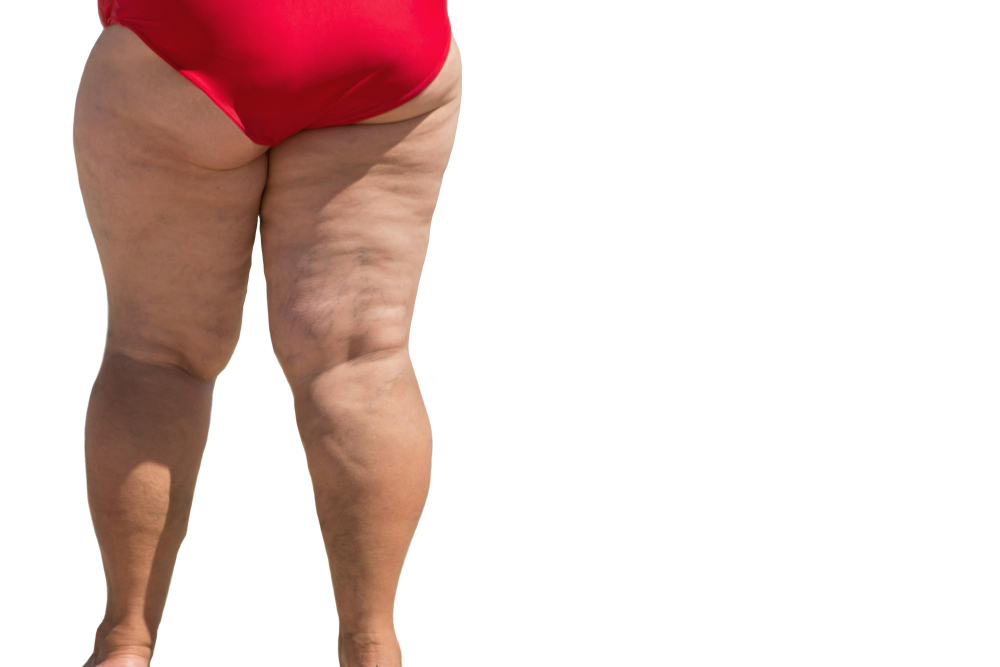Lipedema Challenges In Diagnosis
Avinav
January 23, 2023
Challenges in diagnosing lipedema
Lipedema diagnosis is a difficult, upsetting, and time-consuming process. This is because the sickness is not properly understood by the patient, the general public (especially those close to the person suffering from the ailment), and even medical experts, which leads to early misdiagnosis.
People who have lipedema frequently encounter upsetting comments like “you have a pear-shaped body,” “you normally have a larger structure,” or “this runs in your family,” and over time they have come to accept the condition. Even insulting comments like “you are eating too much,” “you have no control over your diet,” or “you aren’t exercising enough” are heard by some people. While some of these claims may be accurate, many are just partially true and can be quite damaging.
Is it normal for my legs to appear fat in comparison to other people’s legs, which is the query that ultimately led to the diagnosis of lipedema? We shouldn’t be gaining weight if our caloric intake is equal to our caloric expenditure, and we should be losing weight if our caloric intake is less than our caloric expenditure. Right? But why is my lower body different and bulkier, on the other hand?
Distribution Of Body Weight
There are additional questions that need to be addressed before the one above can be answered. Several body parts will need to be assessed.
- Do you tend to gain weight in the trunk area?
- Do you have abnormal fat deposition above and below your knees with distortion of the knee shape?
- Does your weight gain/ fat deposition stop short at the ankle giving an ankle cuff appearance with your feet looking normal?
- Does your legs appear like columns without proper shape of your legs?
- Do you have abnormal fat deposition in your arms with abnormal ballooning just above the elbow?
- Do you notice deposition of fat in the forearm until the wrist giving a wrist band/ cuff like appearance with the hand looking slim and trim?
Do you tend to gain weight in the trunk area?
Compare the weight gain or loss in relation to arms, hips, thighs and legs. Women with Lipedema typically report a different dress size between their upper and lower bodies. For example, the upper body size would be small or medium but the lower body would require XL or XXL.
Do you have abnormal fat deposition above and below your knees with distortion of the knee shape?
Excessive deposition of fat in the inner thighs and around the knees can result in rubbing of inner thighs, change in the natural alignment of the legs with knock knee deformity causing arthritis of the knee joint cartilage (due to differential erosion) leading to early knee replacement surgery.
Does your weight gain/ fat deposition stop short at the ankle giving an ankle cuff appearance with your feet looking normal?
This gives an appearance of wearing something like harem pants with an elastic band around the ankles. This appearance is also called cankles.
Do you notice deposition of fat in the forearm until the wrist giving a wrist band/ cuff like appearance with the hand looking slim and trim?
The fat accumulation in specific areas of the body during weight gain may help indicate if the weight gain is normal, overweight/ obesity or accumulation of Lipedema fat. If the accumulation of fat is out of proportion in certain pockets in comparison to other areas, it could be a tip off that you have lipedema. This identification could be difficult to identify in patients who are in stage 3 or 4 of lipedema and also accompanied with obesity.
Areas of the body that differentiate if weight gain may be due to lipedema:
- Buttock shelves: A relatively characteristic feature noticed in patients suffering from lipedema. A large buttock that projects out significantly from the lower back especially when looking at your silhouette from the sides.
- Saddle bags: Large areas of fat projecting outwardly beyond the normal curvature of the hips, giving an appearance of having placed a volleyball on either side of the hip.
- Cankles: Abnormal accumulation of fat around the ankle region causing an ankle cuff like appearance. This is another sign typically seen in lipedema.
- Bat wings: 80% of women with lipedema have unusual deposition of fat in the arms causing an overhang giving a bat wing effect.
Where does lipedema fat accumulate?

Fat Accumulation Areas
Normal fat vs. Lipedema fat
It is important to identify normal fat vs. Lipedema fat to differentiate between normal fat seen in obesity and lipedema.
Situation | Normal fat | Lipedema fat |
I accidentally hit a side table and the next day I noticed a bruise | Doesn’t happen normally | Seen frequently |
My clothes leave marks on my legs and thighs especially at the creases | Not normal | Seen frequently |
My skin is thick and rough with cellulite bulges and large nodules | Cellulite may be seen but not rough or heavy | Seen frequently with firm skin and fat |
While dieting I lose weight uniformly all over my body | Typical of normal fat | Weight loss is more often seen in the face, chest and abdomen but not proportionate in the arms and lower body |
My skin is tender to touch | Not normal | Not unusual |
My body is curvy before and after weight loss | Typical of normal fat | The lower body is unusually more curvaceous than the upper body |
Pain and mobility:
Other than differences in physical appearance, women with lipedema can experience a range of painful symptoms. Women with lipedema tend to bruise very easily to minor injuries which normal individuals don’t experience the same. Unusual pain may be noticed if a child even grabs at your leg. This kind of pain and bruising leads to restriction of physical activity leading to further weight gain.
Finding solutions:
Diagnosing a patient with lipedema is both time consuming and challenging. Lack of awareness in the medical community and society as a whole makes it really difficult to know when is the right time to approach and seek medical attention. Even if the patient realizes her condition the doctor may not recognize the symptoms of lipedema. Your doctor may not be aware or may not be trained to diagnose lipedema. It is important to advocate for your health and approach and seek expert guidance.
This disease, lipedema is a subcutaneous fat storage disorder which is not widely recognized by the medical community so far. This disorder affects women primarily causing an enlargement of legs due to fat deposition under the skin, which typically gets worse over the time, making diagnosis and treatment more important. There is a genetic component to lipedema and the gene (AKR1C1) has been recently identified. Madelung’s disease, Dercum’s disease are to be identified and excluded. Obesity could accompany lipedema and add to the confusion in diagnosis. We know that lipedema leads to an excessive buildup of fat primarily in the lower half of the body (but can also affect the arms, abdomen and breasts) and can create fat pockets around the knees, ankles and elbows. These fat deposits can be compounded by chronic pain in some individuals.
The lipedema affected areas could also be associated with easy bruising, tenderness and pain. Patients often report being misdiagnosed by their family and doctors as being obese. Unfortunately lipedema fat is far more stubborn than regular fat and does not respond to diet or exercise.
The author, Dr. Srinagesh Vadrevu, is a consultant Plastic and Cosmetic surgeon with special interest in lipedema. He is a Pioneer in the management of lipedema in India. He is based in Hyderabad, India and can be contacted at Apollo health city, Jubilee hills or Ojas aesthetic, Madhapur, Hyderabad.
Phone no: +919515106591
Have Any Question?
Lipedema is a condition that causes excess fat to accumulate in the lower part of the body.
- +919515106591
- srinageshlipedema@gmail.com



